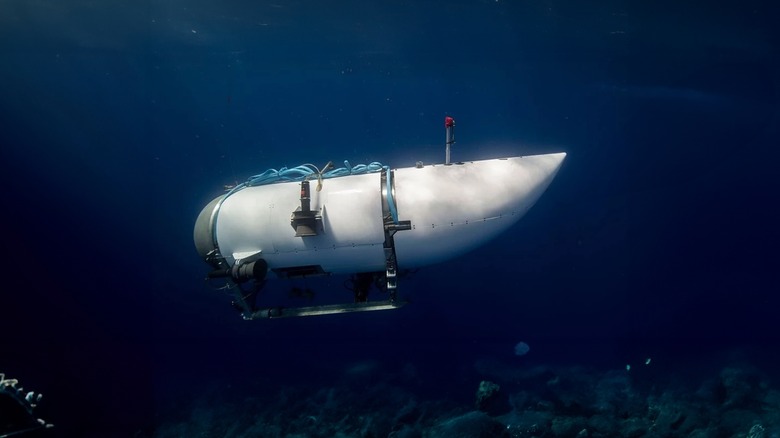
Amnat phomuang/Shutterstock
The final moments of those onboard the doomed OceanGate Titan submersible that imploded more than a year ago were filled with «terror and mental anguish,» according to a new lawsuit filed by the surviving family of one of the deceased, the Associated Press reports. Titan crew member Paul-Henri Nargeolet, one of the five people who lost their lives deep beneath the North Atlantic waves in June 2023, was a Titanic enthusiast who took part in 37 dives to the site of the sunken ship.
Advertisement
According to the lawsuit, it was a world record number of dives that made him one of the world’s foremost experts on the subject. Now, his estate’s lawyers are alleging that OceanGate, the company responsible for the deadly expedition, had prior knowledge of the Titan’s «flaws and shortcomings» that were «not disclosed and were purposely concealed.» The wrongful death lawsuit, which seeks $50 million in damages for «carelessness, recklessness, and negligence,» specifically alleges that crucial information regarding the Titan’s unconventional design — which the suit claims relied on constant power and the presence of a wireless signal for the controller, controls, and gauges — was not disclosed to Nargeolet, who was listed as a member of the crew.
Advertisement
Titan victims knew they would die prior to implosion, new lawsuit alleges

Scott Eisen/Getty Images
Though OceanGate declined to comment on the legal matter, the lawsuit filed in King County, Washington, on Tuesday, will require a response in legal form within 20 days according to local law — and it makes startling claims. The suit draws attention to aspects of the Titan submersible’s design and construction that it alleges should have raised red flags and been disclosed. The legal complaint likewise points to OceanGate founder Stockton Rush, who died in the implosion, accusing him of negligence and cover-ups.
Advertisement
In the document, Rush is depicted as having had an «obsession with being remembered for ‘innovation’ alongside such luminaries as Steve Jobs and Elon Musk,» which the suit connects to his alleged disregard for accepted standards of safety when constructing the ill-fated seacraft — one of the reasons the sub may have been doomed to fail. As well, the lawsuit describes the futile terror the crew and passengers may have experienced in the final minutes of their lives.
«Common sense dictates that the crew were well aware they were going to die, before dying,» the lawsuit claims. «The crew may well have heard the carbon fiber’s crackling noise grow more intense as the weight of the water pressed on Titan’s hull. The crew lost communications and perhaps power as well. By experts’ reckoning, they would have continued to descend, in full knowledge of the vessel’s irreversible failures, experiencing terror and mental anguish prior to the Titan ultimately imploding.»
Advertisement
The Titan’s construction and tech were controversial

ssi77/Shutterstock
The submersible’s design, including its tech system, proved to be controversial prior to the tragic accident. For instance, Titan’s hull was constructed of carbon fiber that crumpled during the implosion rather than the titanium normally used for submersibles, a decision the suit alleges came about because Rush «believed that titanium was unnecessarily heavy.»
Advertisement
Rush had allegedly recognized that the carbon fiber could potentially break down, adding an acoustic detection system for safety. In a particularly poignant section, the suit claims Rush was angered by OceanGate’s head of marine operations after he asked for a comprehensive scan of the carbon fiber hull for the purpose of filing a safety report, ultimately firing the safety chief. Previous leaks painted a similar picture of disregard for safety.
The tech, too, drew considerable attention due, in part, to the company’s decision to use an inexpensive Logitech game pad as part of its controls. The newly filed lawsuit takes aim at OceanGate’s use of technology, calling the submersible’s implementation a «hip, contemporary, wireless electronics system» that required «a constant source of power and wireless signal.» As revealed by CBS reporter David Pogue in 2022, the vessel had only a single button to turn it on. The reporter had also described a navigation system that relied partially on text messages from the surface to locate the Titanic wreckage.
Advertisement